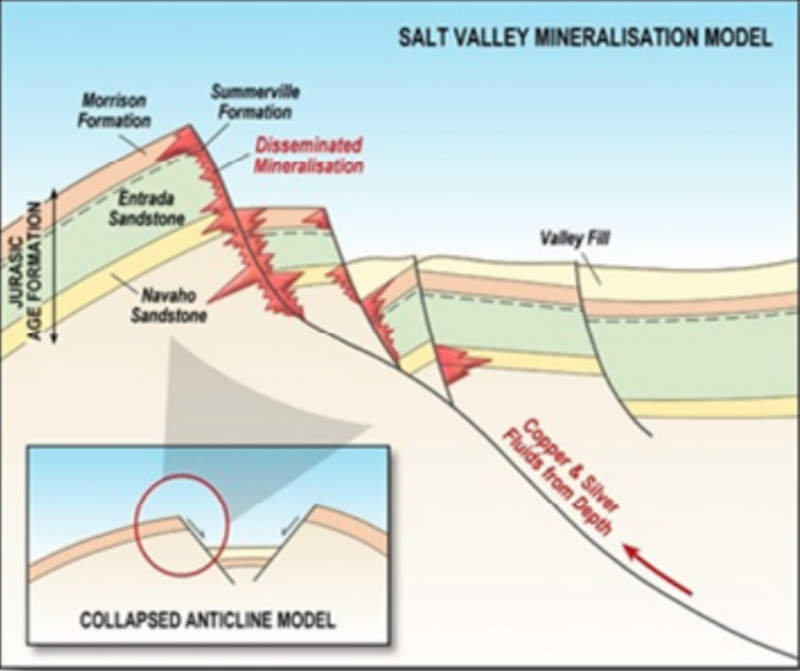Delecta’s transition to miner starts with Copper Ridge, says Greg Smith
Mining
Mining
Special Report: Delecta’s incoming technical director Greg Smith is confident the acquisition of the Copper Ridge project in Utah marks the start of a transition from explorer to miner.
Earlier this month, Delecta (ASX:DLC) struck a deal to acquire American Vanadium for 100 million shares upfront and another 100 million shares on defining a resource of at least 15,000t of copper equivalent. Additionally, DLC will issue a further 100 million shares upon the completion of a positive Scoping Study.
At the core of the acquisition is the prospective 33.7sqkm Copper Ridge project, which covers four historical copper mines and prospects over 9km of strike, as well as three other uranium-vanadium projects in Utah and Colorado.
Copper Ridge is just 95km north of the Lisbon Valley copper mine. In 2013 the Lisbon Valley copper mine was forecast to produce 20 million lbs – 30 million lbs of copper for +10 years. .
“They have done deeper drilling at Lisbon valley copper mine with some decent results. At depths greater than 138m, they intersected 6.1m at 1.68 per cent copper and 1.5m grading 3.57 per cent copper. There is mineralisation below these ore bodies at depth,” Smith told Stockhead.
“There are similar styles of mineralisation in the area, and it appears from some interpretations that Copper Ridge and Lisbon Valley may lie on a similar structure”.
“Just to the northeast of Lisbon Valley is another mine called the Cashin Mine, which produced copper ore at about 8 per cent and significant amounts of silver. That was mined up until 1946.”
Then there’s the Hoosier mine, just outside of the Copper Ridge claims to the north, which also produced over 100,000 ounces of silver and high-grade copper.
Copper Ridge itself hosts the Harrison, Xaz, Mealey and Mealey East mines and prospects.
“As you go South from Hoosier, you have the Harrison prospect where copper was mined from Saltwash Sandstones of the Morrison Formation,” Smith said.
“Some local operators dug out the top material in the 1970s; they took out 2-3m of sandstones, crushed it, ground it and stuck it in leach pads and extracted the copper”.
“What we are looking for at Harrison is copper mineralisation in the underlying and much thicker Entrada and Navajo sandstones.”

There is an old shaft called the Cobalt #1 shaft at the Xaz prospect to the south of Harrison, while further south there is the Mealey prospect.
“You can walk along there and pick up malachite (a key copper mineral) just about anywhere but it is especially concentrated in these three areas,” Smith said.
In 2014, previous explorer Firestrike concentrated its exploration in these three areas.
“They went in with man-portable rigs and completed vertical holes to a maximum of 14m depth,” Smith said.
“They achieved some decent results, especially at Mealey where three holes ended in mineralisation with the best intercept of 9.1m at 0.46 per cent copper”.
“At Xaz it was the same thing; the best intercept was 4.9m at 0.22 per cent copper, with five holes at Harrison ending in mineralisation”.
“They definitely didn’t get to the bottom of the mineralised zone in any of those holes. But it shows there is mineralisation there and it has some continuity to it.”
“Delecta is targeting major structures that it interprets as the feeders for the mineralisation. The vendor is now carrying out soil geochemistry to potentially identify higher grade copper zones along these structures”.
“That is expected to give us some excellent drill targets,” Smith said.
“I want to see if we can find some higher-grade material. I know at Lisbon they did some deep drilling and came up with some very good numbers at depth with one hole ending in mineralisation at 228m”.
“We’ve got the model, we have the structures, and we have known mineralisation. Next step is to find out whether Copper Ridge has sufficient mineralisation and grade for it to be an economic resource.”
Delecta is currently looking at drill locations and expects to file Bureau of Land Management drill applications before the end of the year to allow for drilling in the first quarter of 2020.

Smith also touched on the other vanadium-uranium projects, noting that the Vanadium King project was explored in the 1980s by Hunt Oil.
“There is reported medium to low grade vanadium – uranium mineralisation that sits around 100m depth in the centre of the Vanadium King claim block,” Smith said.
“An oil well located within the claims, 2km north of the area of previous drilling contains a gamma ray spike indicating the occurrence of uranium at a similar depth and in similar geology”.
“We plan to work on the uranium-vanadium projects to get them to a stage that when the prices turn we can begin drilling them”.